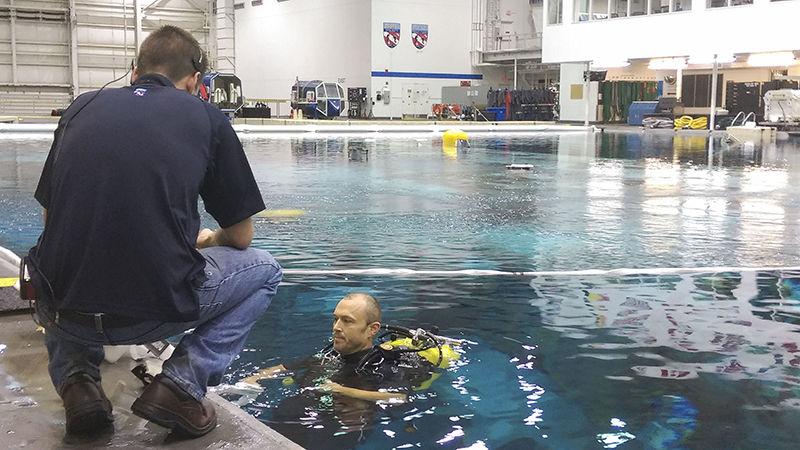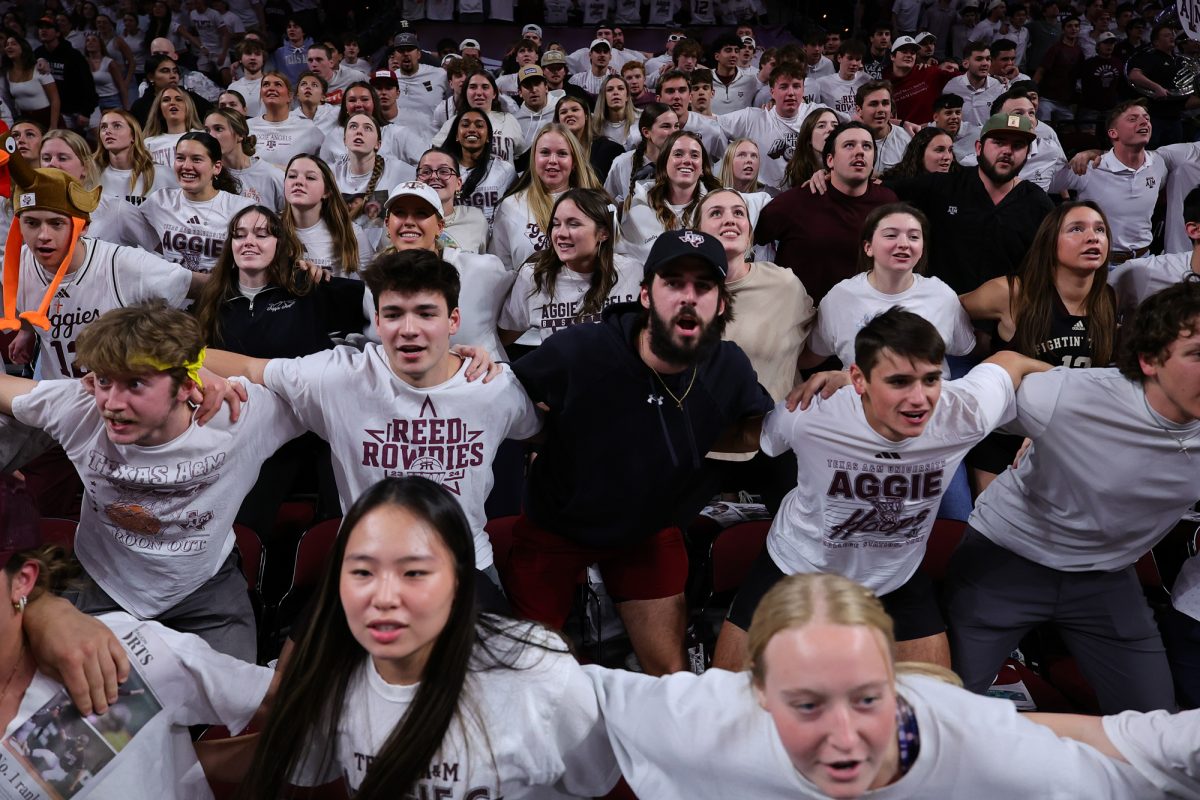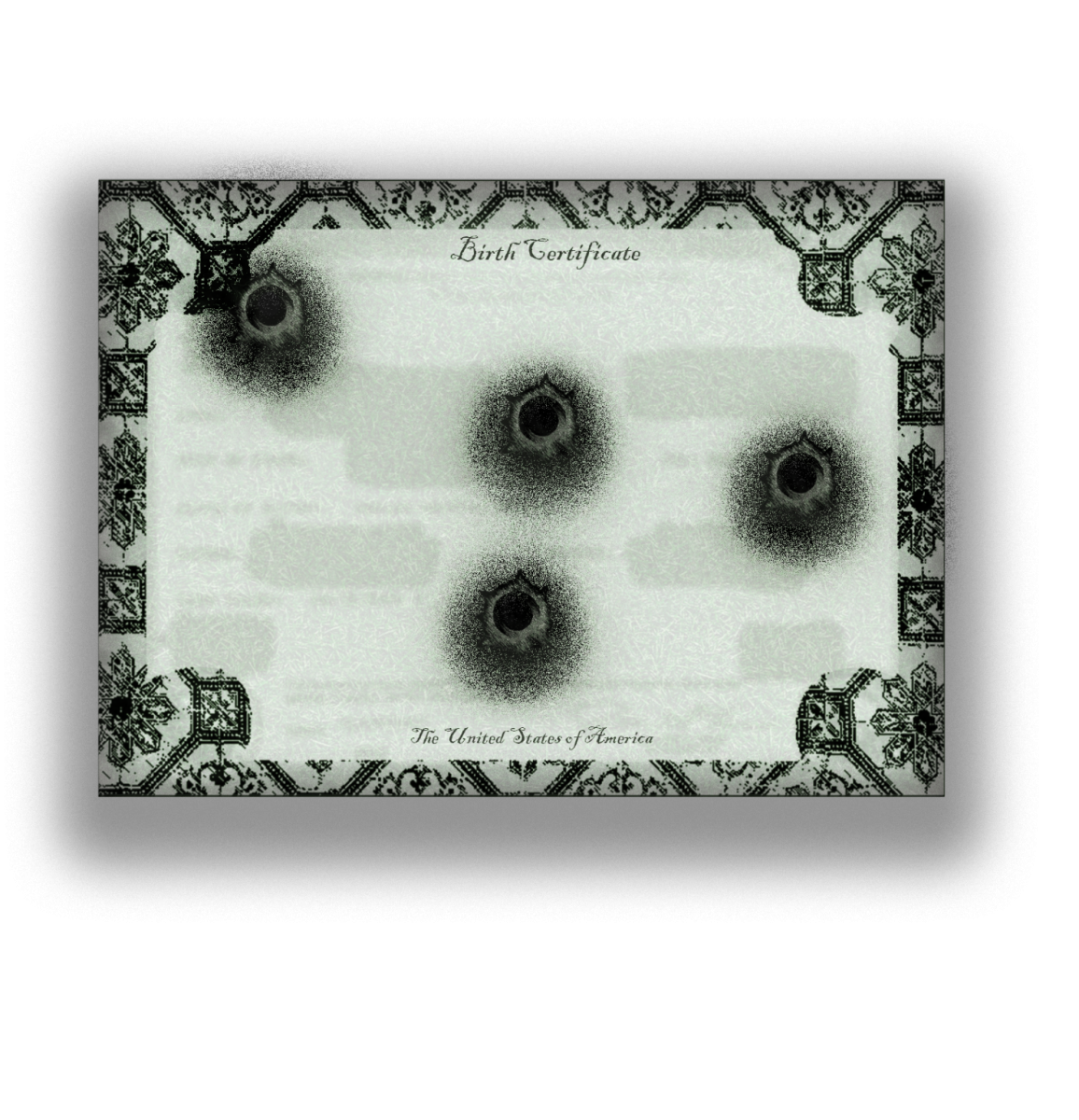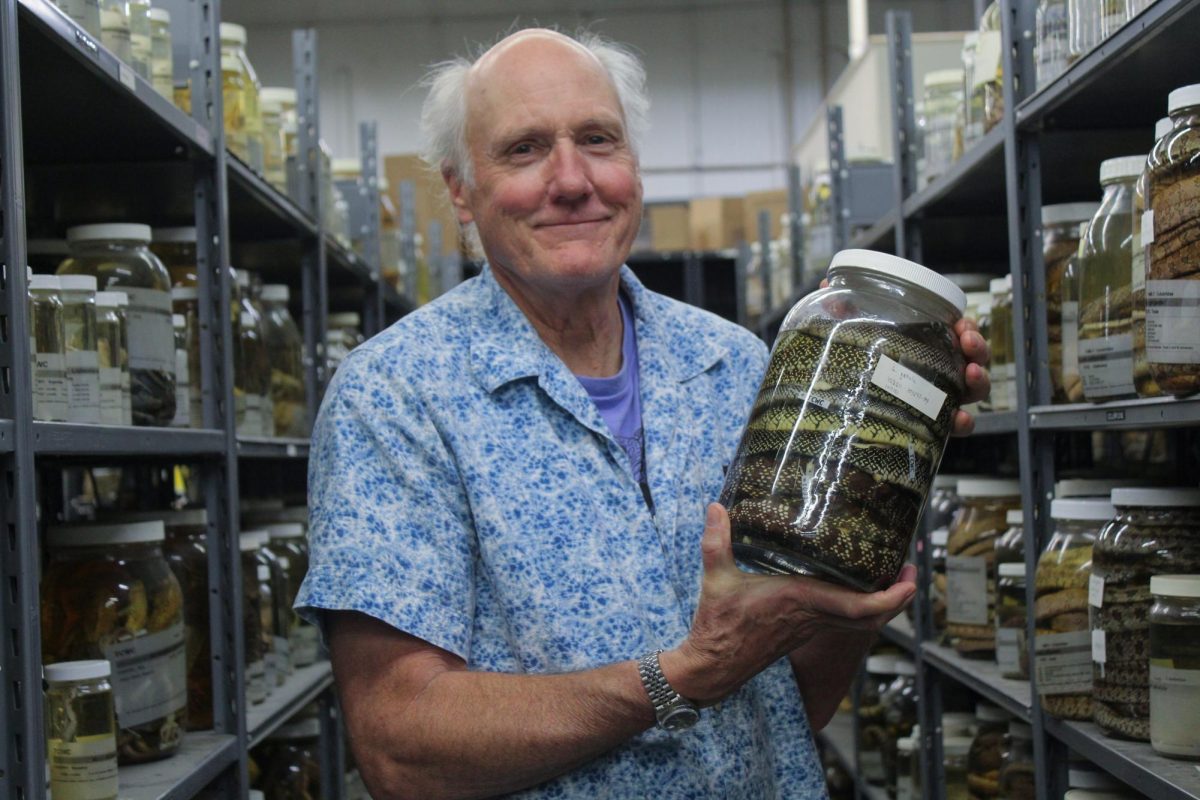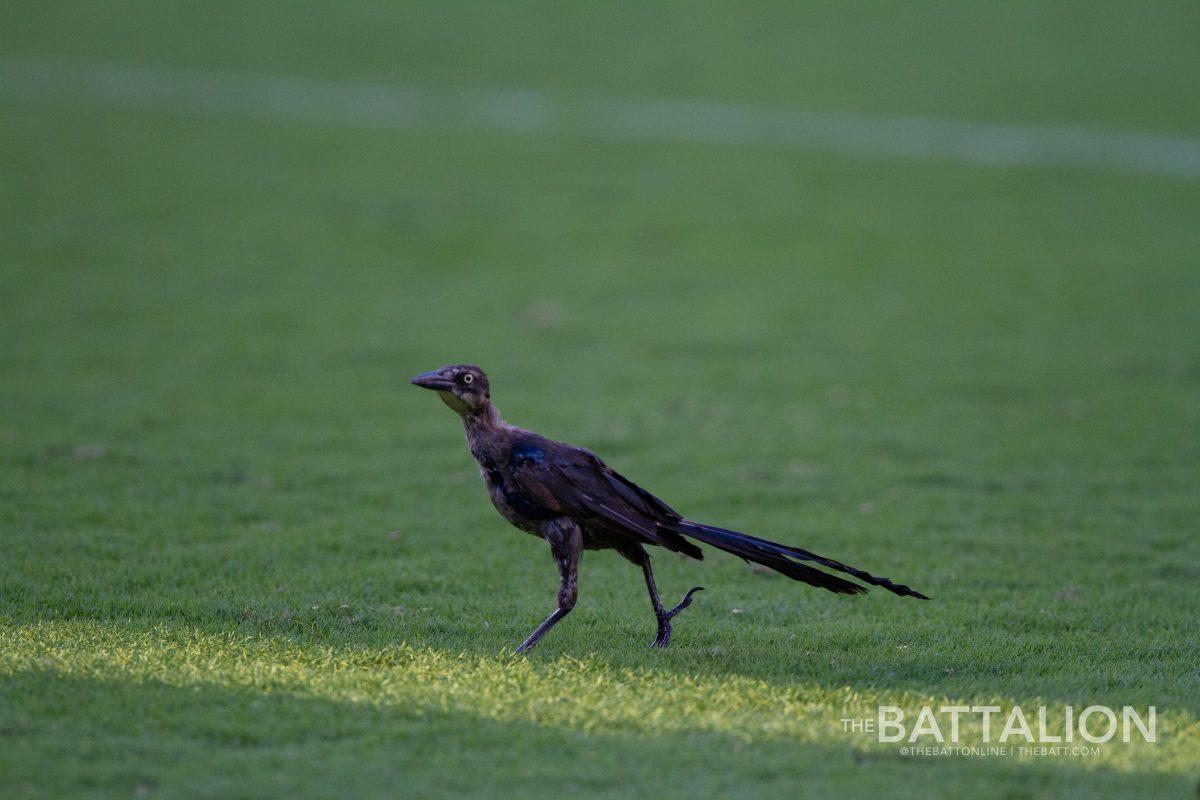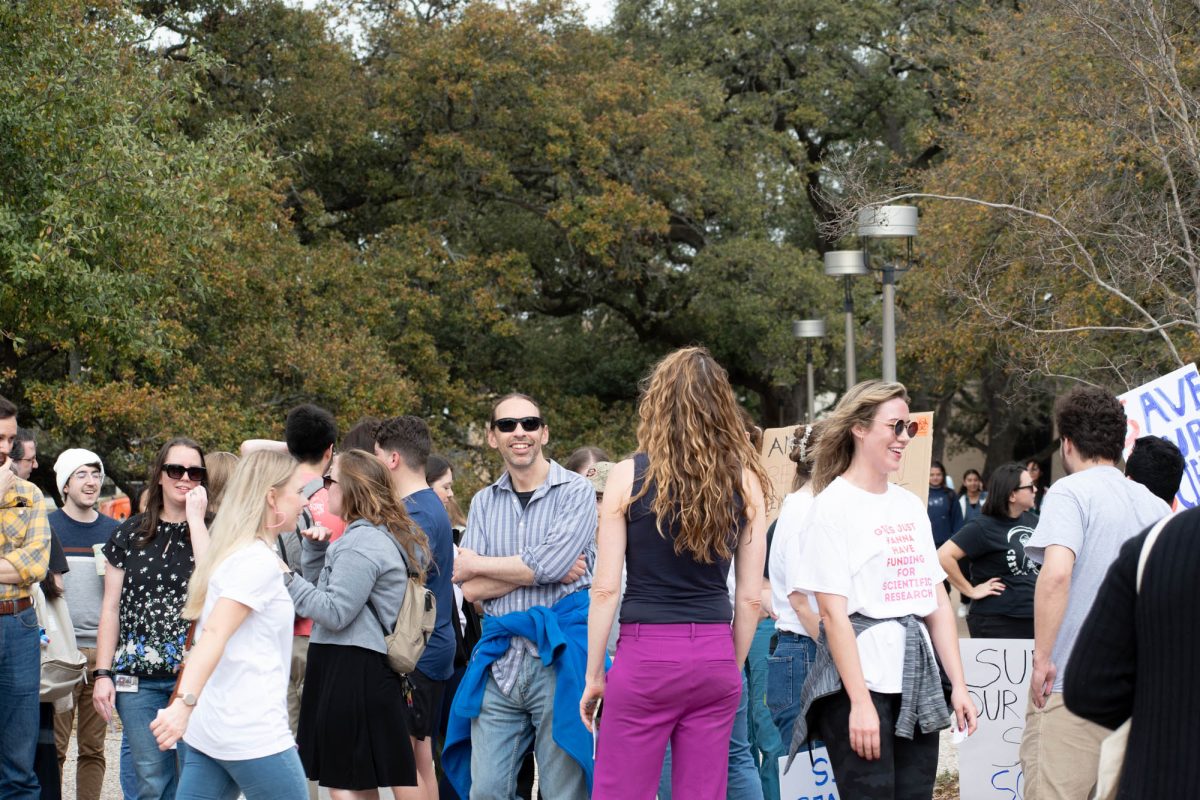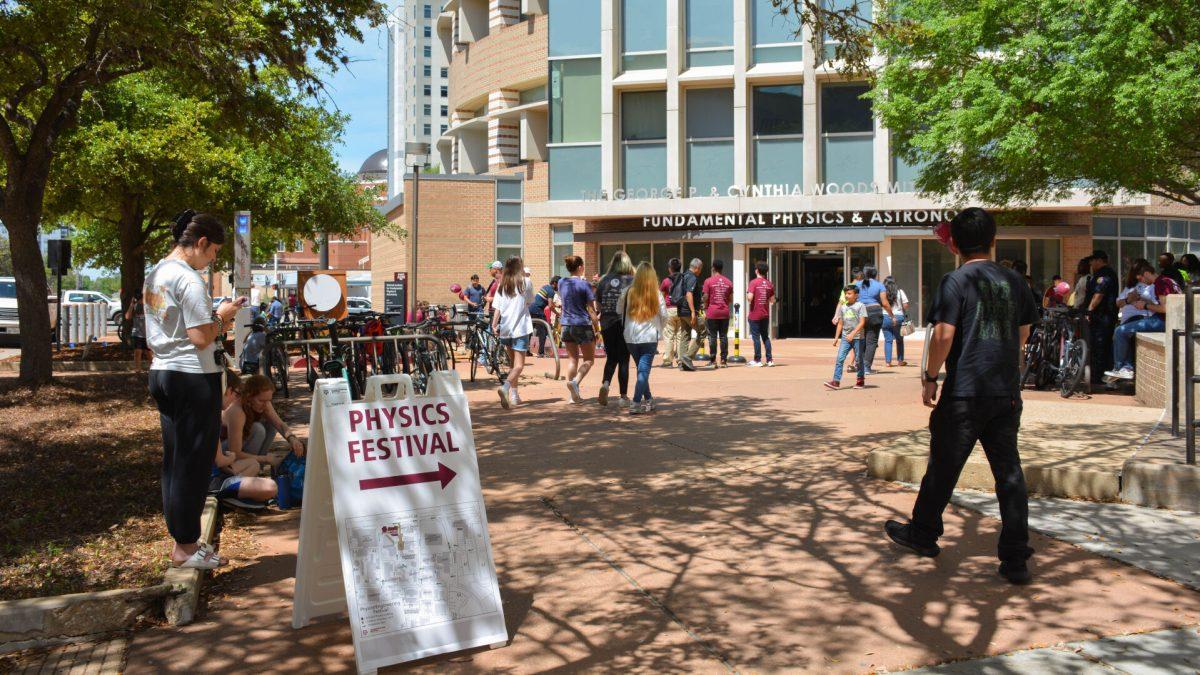If you want to experience outer space, jump into the nearest pool – NASA’s training philosophy has centered on this maxim for decades, and they have the largest swimming pool in the world to prove it.
The Neutral Buoyancy Lab in Houston, Texas holds over 6 million gallons of water. That’s 9 Olympic swimming pools in a 4-story deep, indoor lake where the world’s astronauts train on an exact replica of the International Space Station. It’s the only environment that best simulates micro-gravity, and I had the chance to tour the NBL Tuesday to catch a glimpse of how astronauts prep for life in orbit.
Despite it’s indoor ocean, the first thing I noticed when the intern tour arrived at the NBL was the open space. The main building is a massive warehouse-like enclosure with open space to house different training structures. A bus-sized ISS steel frame took up one side of the floor next to an Orion capsule mock-up, and a gigantic crane that runs across the ceiling can pick these up and submerge them into the pool for astronaut practice. The pool itself is behind a two-story wall that runs the length of a building – the water’s surface starts two stories above ground level and extends two stories beneath the surface to total a 40 foot depth.
An astronaut trains 10 hours underwater for every one hour EVA to make their spacewalks a perfectly scripted affair. Lives and trillion dollar equipment depend on every action, so astronauts run through every action they’ll take outside the ISS to ensure mission success. Underwater training lasts up to six hours. Some outer space EVA’s run longer, but underwater health concerns place a cap on the time an astronaut can spend beneath the surface.
Each astronaut is assigned four to five divers who record their progress, ensure their safety and keep them neutrally buoyant. Weights are added or removed to the astronaut’s suit throughout the training mission to simulate micro-gravity as accurately as possible. The largest difference between outer space and the pool? People and tools come to a sluggish stop underwater, while they continue unimpeded unless an imposed force stops them in outer space.
The pool’s size gives a reference to just how massive the ISS actually is. Despite the NBL’s size, the space station is still too big – training planners “cut” the station into pieces to fit every component. And 15 national flags grace the NBL’s walls, showing just how broad the station’s scope has become. It is the largest peace-time engineering project in history, and it is inspiring to think that men and women from such different backgrounds come together in this one place to train and advance not just one nation’s interest, but humanity’s.
The world’s largest swimming pool is also NASA’s astronaut proving ground
July 29, 2015
0
Donate to The Battalion
$2065
$5000
Contributed
Our Goal
Your donation will support the student journalists of Texas A&M University - College Station. Your contribution will allow us to purchase equipment and cover our annual website hosting costs, in addition to paying freelance staffers for their work, travel costs for coverage and more!
More to Discover




